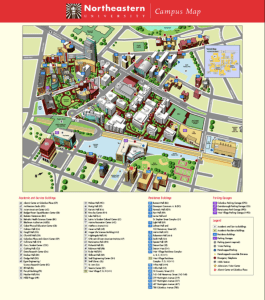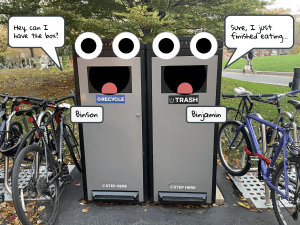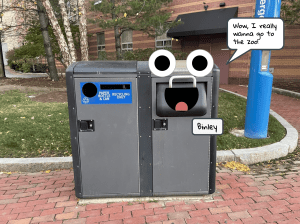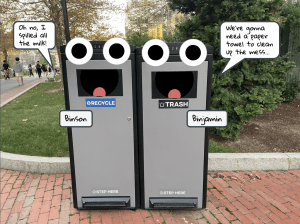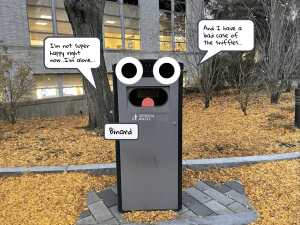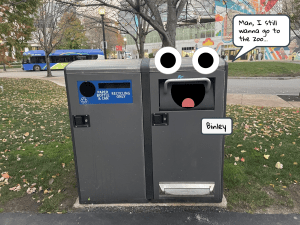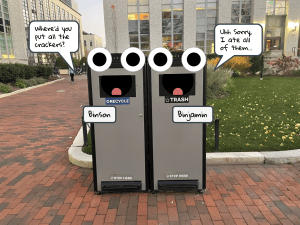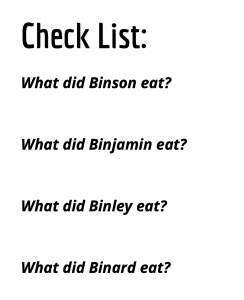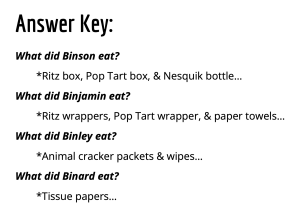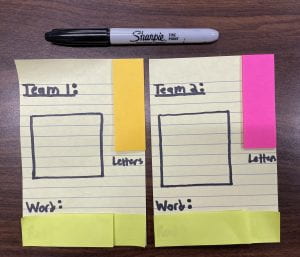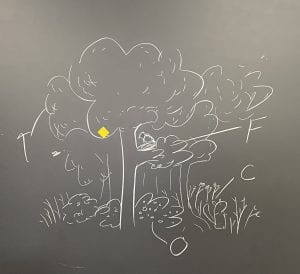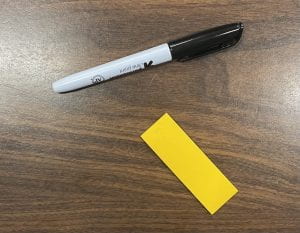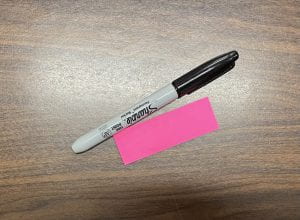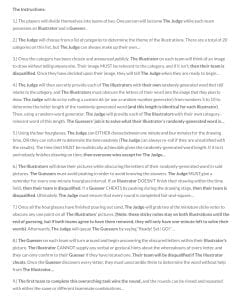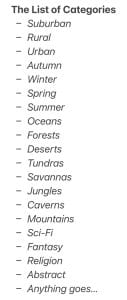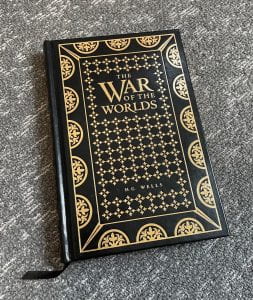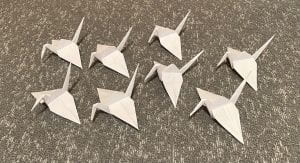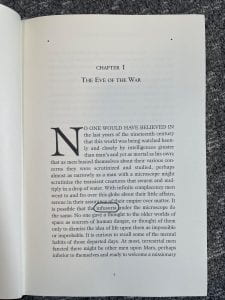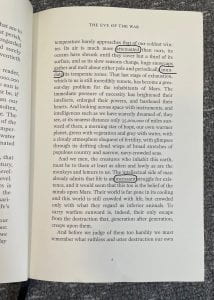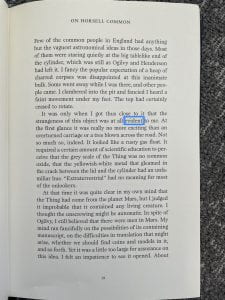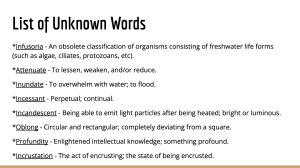The Requirements:
*4+ player (competitive)
*Ages 12+ (children & adults)
The Materials:
*Map of Northeastern University (x1)
*Cardboard Box (with trash & recycling items)
*Pamphlet of Photographs (x1)
*Checklist (x1)
The Instructions:
*Meet with me in front of Ruggles Station to receive your necessary materials…
*Read through the pamphlet of photographs to deduce which items Binson, Binjamin, Binley, & Binard wish to obtain…
*Travel across the campus and navigate using a physical (or digital) map of Northeastern University…
*After you place an item in a bin, keep track of its whereabouts using your checklist…
*If you find any litter during your journey, pick it up and place it in the nearest bin (and write it down on the BACK of your checklist)…
*Return to Ruggles Station, and I will grade your checklist by determining if you disposed of the items correctly…
*Depending on how much litter you picked up, you’ll receive bonus points for your endeavors that will contribute to your final grade…
Artist Statement:
In the Interactive Media & Society course that I finished last semester, my final project was to conceptualize (but not fully implement) an interventionist artwork that can be incorporated into a public space realistically. The assignment’s core requirement was to convey an important message regarding contemporary activism and societal reform, so I quickly went to the drawing board and brainstormed some ideas. Overall, as someone who advocates for responsible recycling and the avoidance of littering, I ultimately decided to compose an interactive piece that would raise awareness about garbage pollution in a lighthearted manner. This overarching concept would later become “Reduce, Reuse, Restyle,” a public demonstration where trash cans and recycling bins would be decorated with speech bubbles and googly eyes. Each of them would discuss which types of wastes that they enjoy “eating” in their everyday lives, further providing them with their own unique personalities. In short, these artistic endeavors aimed to supply people with an eye-catching reminder about where they should dispose of their unwanted items for the betterment of the environment…
Since the entirety of this assignment simply composed of an ideated pitch, I never actually had the opportunity to enact this narrative premise in the real world. However, after watching the famous interventionist piece titled “Uncle Roy All Around You,” which was a massive multiplayer game where strangers communicated with one another throughout a city, I realized that I could transform “Reduce, Reuse, Restyle” into a compelling experience involving Northeastern’s main campus. These revelations established the foundational groundwork for “Trash Can Travelogue,” a game where four players compete and navigate themselves across campus to dispose of specific items in particular bins. Moreover, any litter that they witness during the experience must be documented and disposed of in order to receive additional bonus points at the end of the game, further motivating the players to beautify the university. Even though this project hasn’t been playtested by multiple volunteers simultaneously, I am very proud of the central concepts behind my artwork and I am rather content with how it evolved beyond its original source material…
Many of the intervention piece mentioned in the guest presentation were especially reliant on public spaces and individual volunteers. Some of them involved multiple locations in one general area whereas others relied on unsuspecting volunteers. Furthermore, every single one of them expressed their underlying messages in a wide variety of interesting ways. Even though I greatly appreciate the different methodologies for each individual artwork, I wanted to separate myself from them and experiment with my own creative processes. After all, such an inherent quality is best exemplified by the avant-garde movements that we learned about thus far, and I am genuinely striving to continue with this trend throughout each of these projects. In the end, despite some of the apparent shortcomings with this submission, “Trash Can Travelogue” is an interventionist piece that I am satisfied with in more ways than one, and I (once again) look forward to our next major assignment for the Experimental Game Design course…
